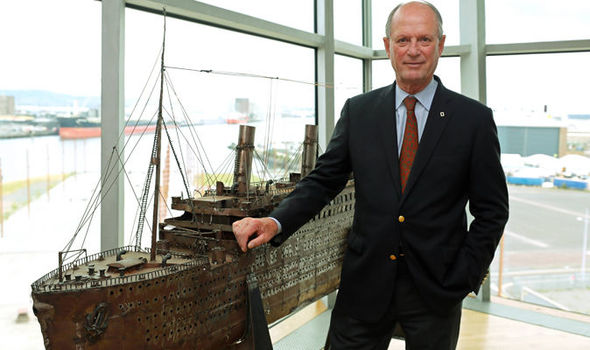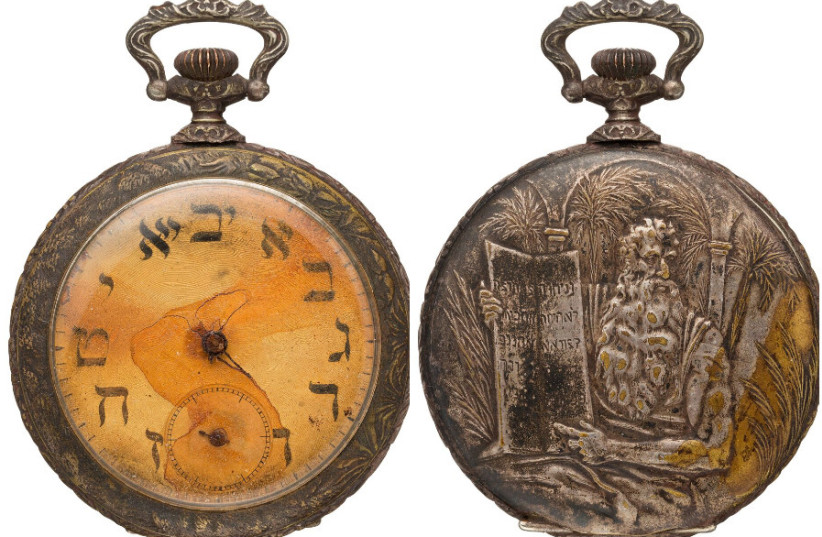The Kantor Pocket Watch of RMS Titanic
Robert Ballard, born in 1942, is a name you may, or may not, know. He’s a retired American Navy officer, and best known for being the most successful underwater archaeologist including the man most responsible for discovering historical shipwrecks. You can thank him, and his team, for discovering the Titanic, the British passenger liner, operated by the White Star Line, that sank in the North Atlantic Ocean, on April 15th, 1912, after striking an iceberg. This discovery helped eventually fuel, the director, James Cameron’s inspiration for his 1997 film, Titanic, which went on to win 11 Academy Awards, including best picture, and catapulted the world’s fascination with the tragic event.
How did Mr. Ballard finance his expedition, needed, to discover the famous shipwreck? With leverage, of course. Defined as ‘the ability to influence situations or people so that you can control what happens’. In 1982, he approached the US Navy about his new deep sea underwater robot craft, The Argo, and his desire to search for the Titanic, however, the Navy was not interested in financing it.

In 1985, things changed, like things often tend to do. The US decided, under the Reagan administration, that they needed to understand what happened to two of their nuclear powered attack submarines, the USS Scorpion and the USS Thresher, which both sank in the 1960s. On April 10th, 1963, Thresher sank, during deep-diving tests, hundreds of miles off the shores of Boston, Massachusetts, killing all 129 crew and shipyard personnel aboard. The Scorpion was also lost in the Atlantic, with her entire 99-person crew, on May 22nd, 1968, as she was returning from a long deployment. The Cold War era demanded that each one of the U.S. Navy’s nuclear submarines be on continual service for the purpose of locating and tracking Soviet attack and missile submarines. But time and constant service, unfortunately, took their toll, on both ships. Using their own leverage, the Navy offered Ballard the funding and opportunity to search for the Titanic, but only if he explored the nuclear submarines, first. After the two missions were completed, with just 12 days left in his trip, he was free to use resources, including The Argo, to hunt and discover the Titanic laying on the ocean floor at a depth of more than 12,000 feet.
From one angle, the discovery kicked off ‘Titanic Mania’ as investors saw lucrative dollar signs, however, in the end, piecing together the moments of that fateful night answered mysteries, for the entire world.
One of the passengers, on the Titanic, was a second class passenger, 34 year old Mr. Sinai Kantor, from Witebsk, Russia. He boarded the ship at Southampton, South East England, together with his wife, Miriam, with plans to travel to New York, paying £26 for their ticket. He was a university graduate, and commission merchant, with plans to sell several trunks of valuable furs, in America, while studying medicine. He drowned, that night, wearing a gray and green suit, green overcoat, blue shirt and black boots. On his person, he carried a pocket telescope, a pocketbook with foreign notes, a letter case, an empty purse, a little gold and silver, some coins and a silver watch too. His wife, for the record, was saved.

Kantor’s Swiss-made open-face silver-on-brass watch, with its original movement and a diameter of three inches, including Hebrew numerals, is highly collectible. The watch’s movement is rusted, with water damage, and the hands are nearly all deteriorated while the dial is stained, too. The back cover has an embossed design that shows Moses holding the Ten Commandments. In the summer, of 2018, his pocket watch sold at public auction for $57,500 USD, to John Miottel, a serious collector of timepieces related to the famous disaster. Miottel added to his collection of timepieces from Titanic victims; Col. John Jacob Astor, the liner’s richest passenger and the era’s richest person in the world, Oscar Woody, the Titanic’s U.S. Postal Clerk and Harold Thomas Cottam, the first person to receive the distress call who served as a wireless operator on the rescue ship, RMS Carpathia. The Kantor pocket watch was sold by a direct descendant of Miriam and Sinai Kantor.
Eight days after the initial tragedy, a cable repair ship, named the C.S. Mackay-Bennett, arrived to recover as many victims, as possible. Sinai Kantor’s body was pulled, from the icy water, during the seven-day operation. He was labeled ‘Body No. 283’ and embalmed on the ship. He is buried at Mount Zion Cemetery, Queens, New York. The other artifacts, not recovered, waited an additional seventy-three years to be greeted by, a grateful, Robert Ballard during his successful expedition.
Times Ticking has been in operation for more than 30 years, since 1982. We have performed watch repair for customers both locally and internationally. If it Ticks! We KNOW it! Our team of watch repair technicians have a combined experience in watchmaking of over 120 years.

